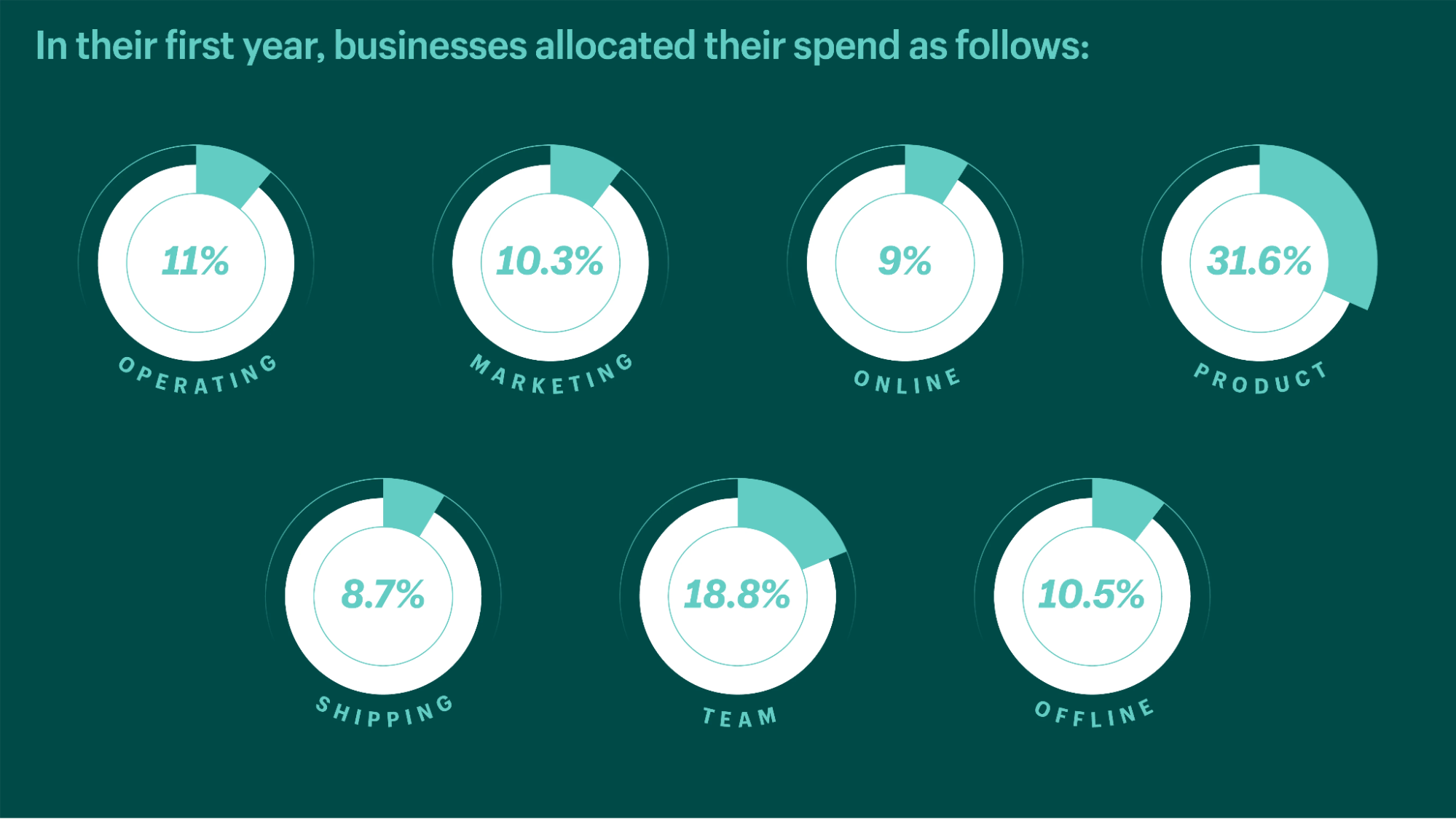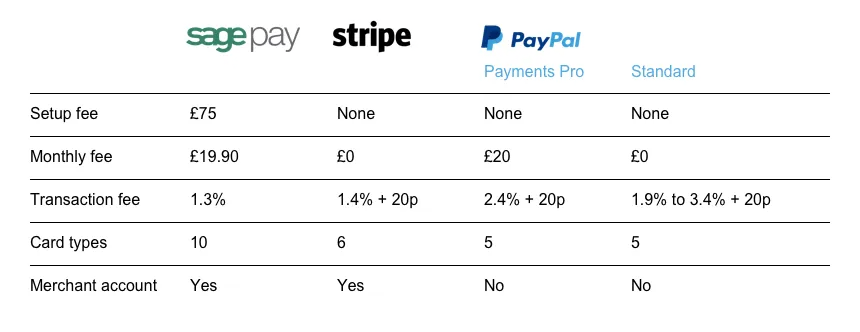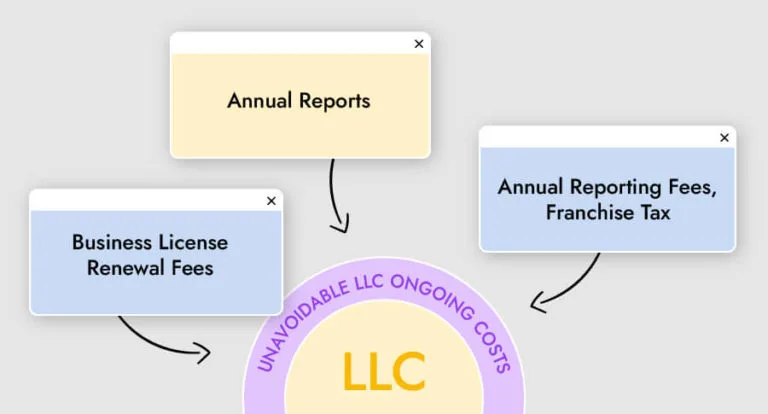So, you’re interested in starting an eCommerce business?
First of all — great. eCommerce has only become more achievable for the average person over recent years, thanks to the emergence of software tools like Shopify, Stripe, and Squarespace that aim to democratize selling things online.
And, done well, it’s a reliable pathway to financial independence and full self-employment that can transform the day-to-day experience of your life, offering a sense of freedom, achievement, and passive income that you simply can’t get working for someone else.
However, despite all the exciting new tools and technology, starting an eCommerce business is still far from “easy and cheap.”
And it’s never the obvious costs that kill eComm startups. It’s the sneakier, hidden ones.
So, allow us to save you a disaster (or two) down the road by offering you the four most unexpected hidden costs of starting an eCommerce business and what you can do to soften the blow.
How much does it cost to start an eCommerce business?
It’s worth starting with this question. Much is made of a person’s ability to launch a business with a few hundred bucks these days, but is that really the case?
Well, yes and no.
“Yes” because you can always start small and grow slowly. Develop a minimum viable product (MVP), find an audience, iterate, and eventually become substantial enough to establish a legitimate presence in the market.
And “no” because you don’t have to start modestly if you have access to cash. It will always be easier and quicker to throw a bunch of money at a business and get a jump ahead. A larger product range, higher advertising spend, and flashy creative will launch you into a better place quickly (even if you miss out on valuable lessons along the way).

So, how much it will take to start your eCommerce business is entirely up to you and the level of usable capital you have. If you’re a student with little access to cash, you’ll have to be more creatively frugal by choosing to open a bank account with the lowest fees.
But, for a more practical, approximate idea of what dollar figure it’ll take to get your eCommerce business up and going, let’s look at the main categories of eCommerce costs.
Types of eCommerce costs
These are the ‘master’ categories of eCommerce business costs, alongside some back-of-the-napkin dollar estimates. Consider them in turn and see if you can work out a more accurate figure for you, given the context of your potential business.
- Technological infrastructure
These are the digital technologies that enable your business to run online. Website hosting, domain name, and payment processing constitute the bare minimum, and together they can equate to anywhere between $30 — $200 per month, depending on the complexity of your systems.
- Inventory
According to Shopify, inventory is where most of a business’s money goes in their first year at 31.6%. Naturally, you need something to sell. Hopefully, you already have a good idea of what that is and how much it will cost. There’s no way to accurately predict how well a new product will sell, but it’s advisable to have at least a month’s worth of inventory at an estimated one sale a day. For most products, that will be at least $500 — $1000, depending on the nature of the product.
- Creative
If you’re bootstrapping, you might be able to get away with designing creative assets yourself with a few free online tools and resources. At the very least, though, you’ll need a solid logo. And that, along with product photography and copywriting, will set you back a bit. At the very least, somewhere between $100 — $500.
So, from our estimation, you can get away with starting a legitimate-looking and well-functioning eCommerce business with a minimum of around $630. With business models like dropshipping, it could be even less, and if you have a host of digital skills at your disposal and a lot of time on your hands, less still.
4 hidden costs of starting your eCommerce business
Let’s get into the lesser-known costs that will likely come out of the woodwork on your eCommerce journey and surprise you. Cash is king in small business, so the last thing you need is a sudden bill that you didn’t plan for.
Storage and inventory management costs
This one always catches people off guard.
Probably because your basement or spare room seemed more than sufficient when you first started. After all, if you tweak the supply and ordering systems, you should be able to maintain a constant inventory level that perfectly matches your capacity.
Wrong. You’ll be surprised how quickly this can get out of hand.
After all, the idea is to grow. If you’re starting with no sales and doing everything you need to do to attract more sales, it won’t take much time to double your inventory needs to match demand.
Accordingly, it won’t be long before your spare room will no longer cut it. The best time to upgrade your inventory storage space is only when you absolutely need to. But the best time to start planning your upgrade is at least a month before that. This will also be the time to start thinking about business process automation systems like inventory management software to control the chaos.
Track your first month of sales closely and create a forecast that predicts the point at which your current storage capacity will be insufficient. If you have a broad product range and lots of service add-ons, start pricing up relevant inventory management systems.
Payment merchant transaction costs
Did you know that the payment gateway (the company that integrates with your website in order to accept and process financial transactions, also sometimes called a “payment merchant”) takes a cut of every sale?
Did you know that the cut is not only based on a standard percentage amount of the sale but also an additional fixed fee per sale?
If you didn’t, you’re not alone. This always shocks low-margin businesses, forcing them to reconfigure their margins with great difficulty and frustration after committing to a platform and payment merchant.
Here is a comparison chart of the relative costs for each of the main payment gateways:

The good news is, you won’t be paying anything upfront to get these integrated onto your site and start taking payments. The most popular merchants aimed at small startups (Stripe and PayPal) don’t take monthly fees.
But let’s run a quick calculation to see how their fees impact a small eCommerce brand.
At 50 sales a month of a $50 product, you’ll generate $30,000 in revenue. 1.4% of that is $420, plus 26 cents (converted from British pence) times 600 sales is $156. So you’ll essentially be paying your payment merchant $576 a year with those sales figures, which is 1.92% of your total sales revenue.
It might not be enough to truly scare you. Still, it’s a figure that’s worth working into your profitability calculations earlier rather than later to maintain realistic expectations about how much you’ll be taking home.
Legalization and compliance costs
Life was probably a lot simpler in the old days, where you could set up a stall at the local market and start slinging whatever it was you had to offer, with no regard for bureaucracy, legality, or compliance.
But the digital marketplace is one of endless complexity, not to mention one that shifts and changes on a near-constant basis.
Accordingly, there are many things you need to consider when it comes to operating “above-board” — especially if your product is in a sensitive category like alcohol, CBD, or tactical gear.

Before that, even, you will face the cost of legalizing your business, usually by incorporating it into an LLC. This establishes it as a corporate entity in the eyes of the law and sets the rules related to taxation and liabilities.
Furthermore, you’ll have to pay attention to the ever-changing world of privacy compliance. Consumers have had enough of being tracked and recorded, and efforts to minimize these risks to public internet safety are being motioned into law.
The results of these complex laws include rules on how you collect, manage, sell, and share data. One of the most ubiquitous requirements is for businesses to have a comprehensive and transparent privacy policy that outlines all of the above.
Creating a transparent privacy policy on how your eCommerce business would collect and use information isn’t the easiest task, especially for small businesses without much access to legal resources. Luckily, more simple solutions, such as a privacy policy generator, exist to relieve the headache and worry of drafting these documents yourself.
Unless you’re already an expert in these matters or have great legal contacts, you’ll need to get your business regularly audited by professional bodies for compliance. And, you guessed it, that costs money.
However, having your business audited costs less money than it will cost in fines if you’re found to be non-compliant.
Creative content costs
It takes a pragmatic, economic mind to devise and launch a successful eCommerce business.
Similarly, it takes an imaginative, uninhibited mind to produce awesome content like graphics and copy.
If you could be described as both of those things, then good for you! You’re one of the lucky ones. For most, though, it’s typically one or the other.
And that’s why you should think seriously about where and how you can most effectively allocate capital to creative production.
Services are expensive, so pick wisely. Of course, you can be frugal in this regard to some extent. Using a free online photo editor for quick, on-brand social posts, or buying a couple of torso mannequins for clothing imagery instead of using live models can go a long way.
But nothing feels better in small business than seeing your ideas brought to life by a competent professional. Be it a logo, exciting product copy, or brilliant product photography.
Bootstrap, by all means, but know that you’ll eventually hit a plateau point where the potential of your business isn’t represented well by its creative content, and you’ll need to take it up a notch.
What are the hidden costs of starting an eCommerce business?
The answer to that question can be summarized into a single word: legitimacy.
The taxman isn’t going to be knocking down your door after you start shifting a few units here and there. Customers aren’t going to be rushing to your website in the thousands until after at least a year of operation. Lawyers won’t hound a startup about compliance in month one.
Inventory, digital infrastructure, and content costs for an eCommerce startup could be estimated to a reasonable degree of accuracy with a quick Google search. However, the hidden costs don‘t arrive until you start showing signs of legitimacy.
Whether that’s hitting a certain sales figure, reaching a certain market size, or finally getting a few contractors on board to give you a hand.
Don’t fret about these costs once they arrive — it’s actually great news! It means you’re onto something. Just keep the major hidden costs of doing business above in mind, and keep moving forward.
Author Bio
Joanne Camarce is a digital marketer focused on growing and strategizing B2B marketing and PR efforts. She loves slaying outreach campaigns and connecting with brands like G2, Wordstream, Process Street, and more. When she’s not wearing her marketing hat, you’ll find Joanne lost in the world of Japanese music and art, or just being a dog mom.

